bzizzi
Active Member
Hey guys, I couldn't find anything on fixing carpet after it's been trimmed too short, or was sent by the manufacturer as a "less than par" length. So I found out how to fix it.
It requires simple materials you can get from an auto parts store like Napa, or Advanced Auto.
1. fiberglass sheet, enough to spread the length of the edge you plan on extending.
2. a carpet roller, something small and rubber.
3. extra carpet.
4. needle nosed pliers.
5. heat gun.
As you can see by the pictures that the carpet patch (picture 9 "strip to be extended") I did was only a foot long, as far as I can tell it can be done with any length as long as it's done right.
To start I would suggest straightening the edge you plan on fixing, give you less contours to match with the mating piece.
Next, cut the extending piece (picture 9) leave an extra 2-3 inches wider to trim to the right length if needed. I needed a patching piece of material to bridge the gap of the two carpet pieces, luckily the material that makes up the backing of the carpet is a lot like hot glue and melts very easy to itself at around 150 degrees.
I stripped a 2 inch wide 1 foot long piece of extra carpeting I had laying around of the fur and used the plastic backing as a filling material (pictures 4-5).
To strip the carpet fur from the backing material, use the needle nosed pliers to grab a loop from the end and pull downward.
Using fiber glass strips to absorb and hold the carpet together gives the bond an unmatched strength. I tested a piece and could barely even cut it apart.
1. heat the two pieces next to one another (put cardboard under it to stop from burning anything)
2. spread the bridge plastic across the seam, keeping it hot, but not liquid. (no picture)
3. from one end to another (doesn't matter which) heat the carpet bottom in a large enough area to fit the fiberglass strips and place the strips across the seam.
4. roll the strips onto the carpet with medium pressure applying heat still to allow for the fibers to absorb the melted plastic backing. Continue until all pieces of fiberglass bridge the gap in the desired pattern.
5. let the bond fully cool.
6. trim the excess fiberglass off.
If the carpet was flattened when you rolled the fiberglass on the opposite side, use a fine bristled metal scrub brush to "groom" the carpet at the seam until looks natural.
Now sit back and show off the seamless carpet job to all your buddies.
I hope this helps with any troubles. If done right the carpet will be "melted" together and held with fiberglass, it will take more than daily traffic and a knife to break it apart again.
Any questions feel free to post, I'll try and help you through any issues or concerns.
Good luck,
Blake
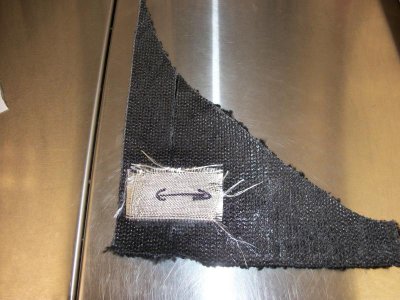
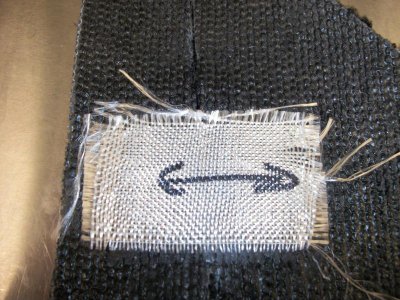
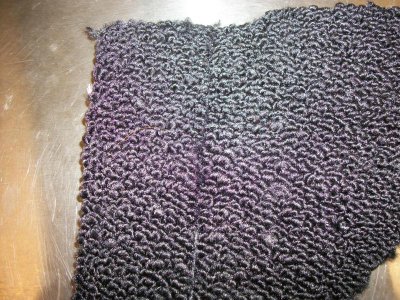
Tested pieces of material
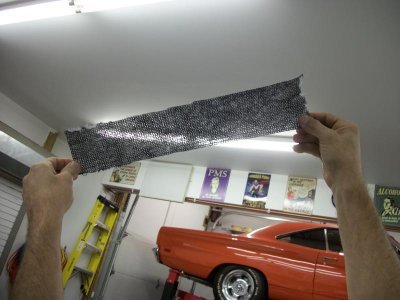
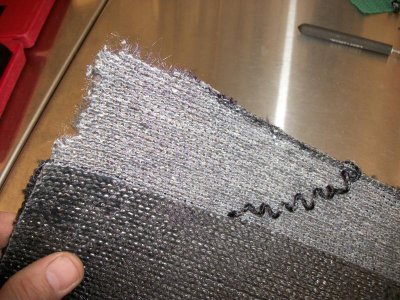
bridging material
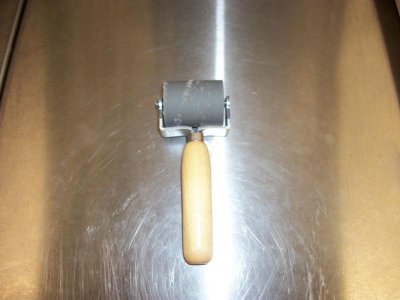
roller
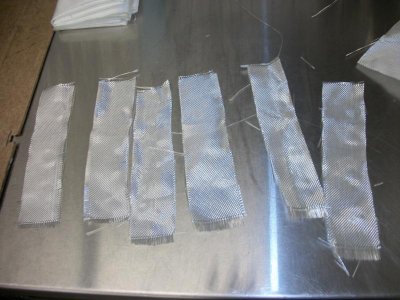
fiberglass strips
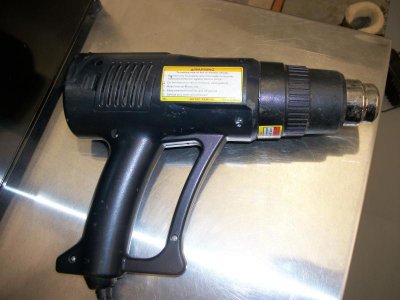
standard heat gun
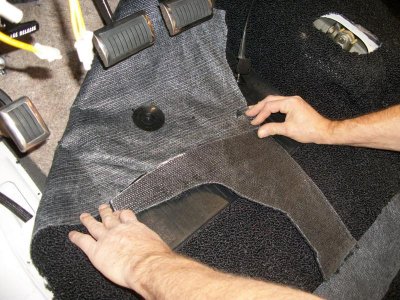
strip to be extended
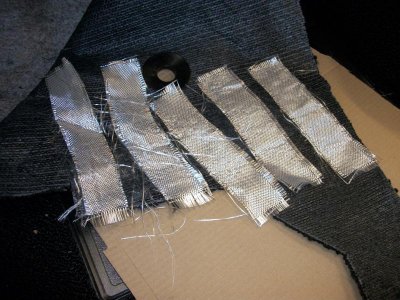
heated and rolled across to hold the seam
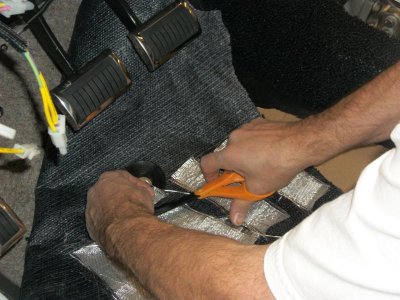
trimming the excess backing
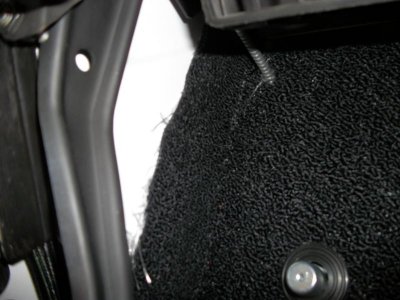
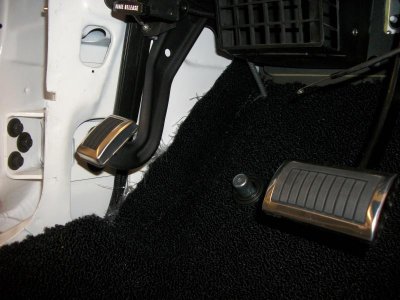
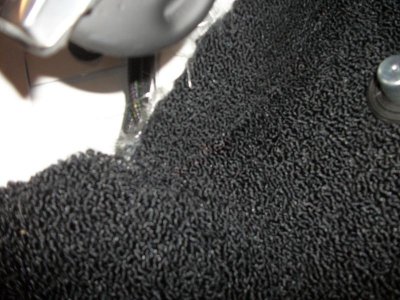
finished carpet seam after grooming the connection
It requires simple materials you can get from an auto parts store like Napa, or Advanced Auto.
1. fiberglass sheet, enough to spread the length of the edge you plan on extending.
2. a carpet roller, something small and rubber.
3. extra carpet.
4. needle nosed pliers.
5. heat gun.
As you can see by the pictures that the carpet patch (picture 9 "strip to be extended") I did was only a foot long, as far as I can tell it can be done with any length as long as it's done right.
To start I would suggest straightening the edge you plan on fixing, give you less contours to match with the mating piece.
Next, cut the extending piece (picture 9) leave an extra 2-3 inches wider to trim to the right length if needed. I needed a patching piece of material to bridge the gap of the two carpet pieces, luckily the material that makes up the backing of the carpet is a lot like hot glue and melts very easy to itself at around 150 degrees.
I stripped a 2 inch wide 1 foot long piece of extra carpeting I had laying around of the fur and used the plastic backing as a filling material (pictures 4-5).
To strip the carpet fur from the backing material, use the needle nosed pliers to grab a loop from the end and pull downward.
Using fiber glass strips to absorb and hold the carpet together gives the bond an unmatched strength. I tested a piece and could barely even cut it apart.
1. heat the two pieces next to one another (put cardboard under it to stop from burning anything)
2. spread the bridge plastic across the seam, keeping it hot, but not liquid. (no picture)
3. from one end to another (doesn't matter which) heat the carpet bottom in a large enough area to fit the fiberglass strips and place the strips across the seam.
4. roll the strips onto the carpet with medium pressure applying heat still to allow for the fibers to absorb the melted plastic backing. Continue until all pieces of fiberglass bridge the gap in the desired pattern.
5. let the bond fully cool.
6. trim the excess fiberglass off.
If the carpet was flattened when you rolled the fiberglass on the opposite side, use a fine bristled metal scrub brush to "groom" the carpet at the seam until looks natural.
Now sit back and show off the seamless carpet job to all your buddies.
I hope this helps with any troubles. If done right the carpet will be "melted" together and held with fiberglass, it will take more than daily traffic and a knife to break it apart again.
Any questions feel free to post, I'll try and help you through any issues or concerns.
Good luck,
Blake



Tested pieces of material


bridging material

roller

fiberglass strips

standard heat gun

strip to be extended

heated and rolled across to hold the seam

trimming the excess backing



finished carpet seam after grooming the connection
















